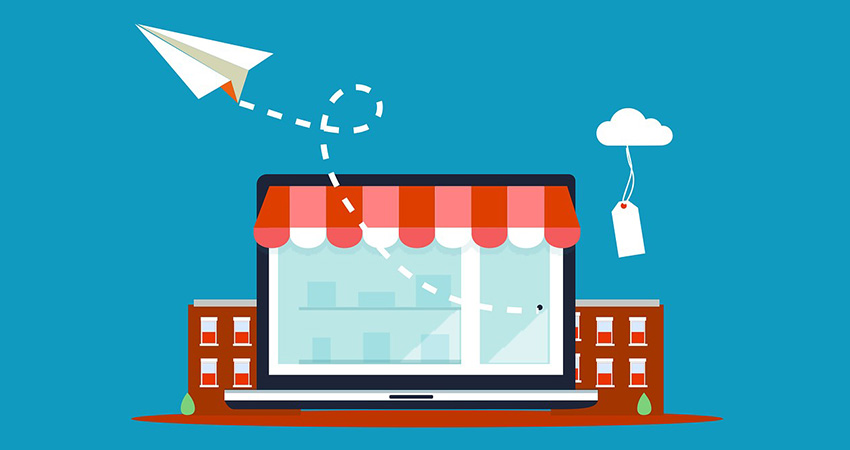Credit: Megan Rexazin on Pixabay
Regardless of the size differentials across businesses, ecommerce has turned so mainstream that buyers are constantly on the hunt for new acquisitions. It’s impossible to discuss ecommerce without bringing up Amazon. In the third quarter of 2020, it generated $96 billion, up from $70 billion the year prior. Its revenue was more staggering at $386 billion in 2020. Statista forecasts that Amazon will be responsible for 50% of total ecommerce sales in the U.S. this year.
So how to determine the value of your ecommerce business? Determining worth is essential for getting to a sale, but that’s not all. Knowing how valuable your business is can inform all kinds of decisions, from business expansion to estate management. For the sake of a sale, however, here are a few useful tools to determine how to best value your ecommerce business.
Some Key Questions
Answering the following questions is essential when it comes to valuing your business.
- How old is your business? Buyers usually assess the age of a business. A rule of thumb: Buyers generally do not consider one in operation less than a year, preferring at least three years of history showing steady growth throughout.
- What do your financials reflect? Financial health is a key element in determining worth. Make sure you keep verifiable financial records from the earliest stages of your business. It is also useful to break down your revenue by customer, product and suppliers, so you can spot potential strengths and weaknesses in your revenue stream.
- What is the extent of returns, chargebacks and refunds? Any ecommerce business is subjected to all three of these. According to data from Shopify, while offline stores can expect an average return rate of 10%, ecommerce sites generally have a much higher rate. Based on your rate of refunds, you can assess the degree of losses.
- How much quality traffic does your ecommerce platform have? Online sales are a function of paid and organic traffic. You can determine how much traffic your ecommerce website has, as well as other metrics, using Google Analytics. Determine where the traffic is coming from (high-ranking keywords, backlinks, referrals, etc.). Quality of traffic is vital as well. This can include data about your bounce rate and conversion rate.
- How optimized are your ecommerce operations? Prospective buyers will pay close attention to the operations of any business they’re looking to acquire. Ensure your operations are optimized for increased efficiency, productivity, boosted margins and reduced costs. To add to this, it is uncommon for buyers to seek a full-time job when investing in your shop. Businesses that require 20 hours or less involvement per week from the owner tend to fetch higher multiples.
- How streamlined is your shop’s customer service? Perhaps the most labor-intensive part of an ecommerce business is customer service, so streamlining it can help you secure a better valuation. Are your product descriptions thorough enough to not warrant repetitive questions from customers? Offering customer service through multiple channels like social, email and live chat is also helpful to address the variety of customer issues and concerns.
Channels for Selling Your Ecommerce Business
Business valuation is only the first part of the equation. The remainder is choosing the ideal channel for selling your ecommerce business. Here are some of the primary ones:
- Direct: Direct sale is pitching your business to a buyer without any intermediary. This process typically takes a few months but can be intimidating if you’re not familiar with it. The major benefit here is that you’re working closely with a potential acquirer, meaning minimal cost to you.
- Marketplace: A marketplace sale is when your business is placed onto a marketplace, which makes it visible to multiple sellers. This can take three to nine months, and listing fees are applied. This method of selling is beneficial because your business will be exposed to more potential acquirers, in turn increasing the likelihood of a successful transaction.
- Auction: Here your business is presented to a group of bidders who submit their best offers. This is one of the fastest routes to a sale, usually ranging from one week to a month. However, you are usually required to pay 10% of the transaction amount, along with a listing fee. Your business is subjected to market prices, but the risk of sale at a price lower than expected is high.
- An M&A advisor: This is a streamlined means of sale wherein an advisor will negotiate with a network of sellers at a rate in your favor, irrespective of market conditions. Fees tend to be 10%–15% of your sale price paid to the advisor. This mode has one of the highest success rates of delivering a sale.
In a Nutshell
There is a very robust market of buyers looking to invest in ecommerce. Selling your ecommerce business is a two-pronged process. First, determine your business valuation using a thorough assessment of operations, financials, customer service, traffic and more. The next step is to choose a means of sale suited to your needs. Sale options include direct sale, advisory services, an auction or opting for a marketplace sale. Each has its own set of pros and cons.
Mark B. Goldfinger is the Senior Director of Growth at unybrands

